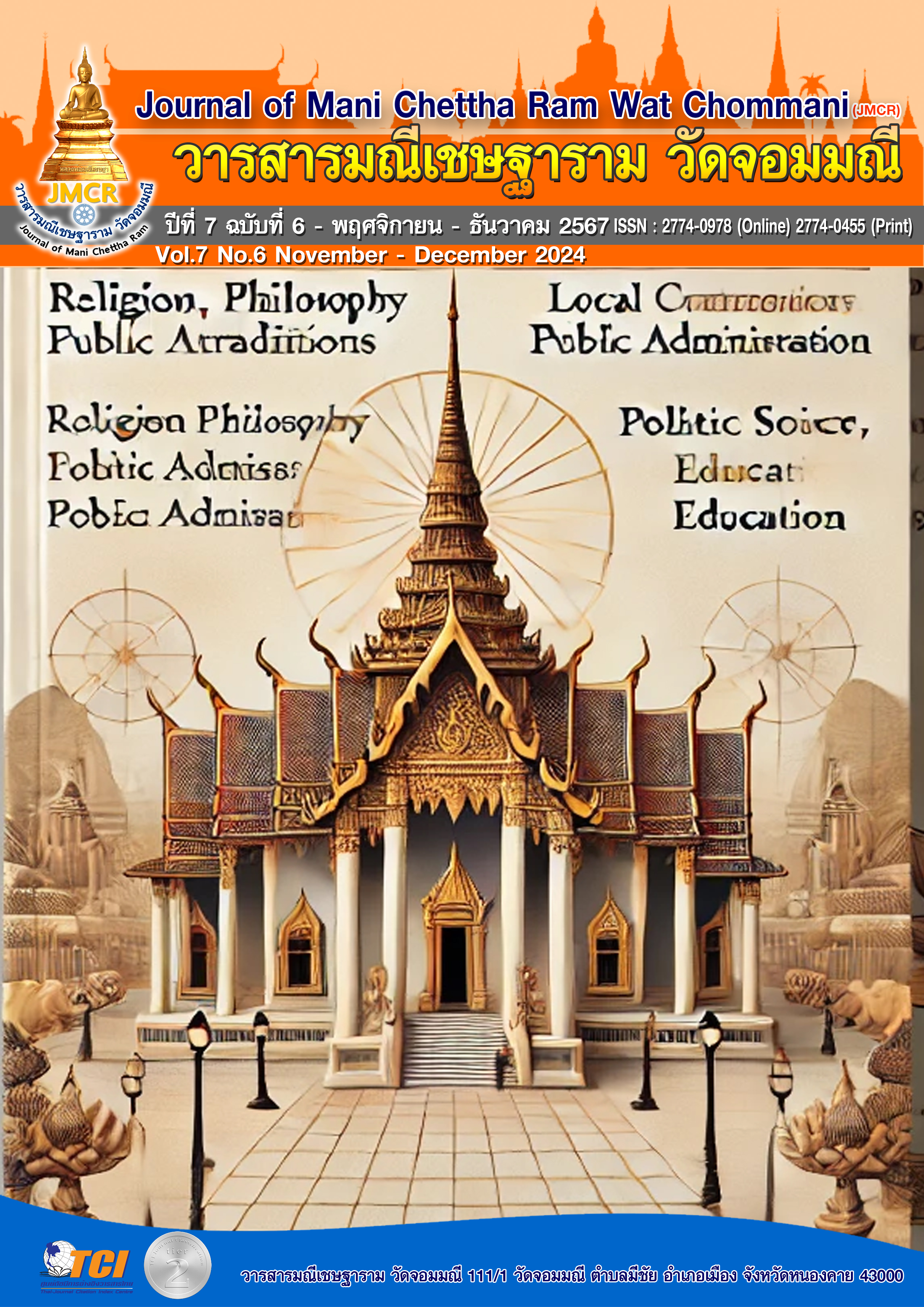BUDDHIST ART IN HISTORY: CREATIVITY AND RELIGIOUS EXPRESSION
Keywords:
Creativity, History, Buddhist Art.Abstract
This academic article aims to focus on the study of Buddhist art within a historical context by exploring the relationship between creativity and religious expression in Buddhism. Buddhist art plays a particularly significant role in conveying doctrinal principles and religious expression through the creation of symbols and sculptures, such as the various postures of the Buddha, including the Mara Vijaya Mudra and Abhaya Mudra. Studying Buddhist art in this context not only helps us understand the meanings hidden behind religious symbols but also reveals the creation of religious and cultural identities that are significant in Buddhist societies. This study also provides a comprehensive view of the development of Buddhist art across different periods and the role of art in propagating and preserving the teachings of the Buddha.
References
จิตร ภูมิศักดิ์. (2545). ศรีวิชัยอาณาจักรของเรา. กรุงเทพมหานคร: มติชน.
ธีรยุทธ พื้นผักหวาน. (2551). ศิลปะทวารวดี. กรุงเทพมหานคร: เมืองโบราณ.
ประเสริฐ เทพศรี. (2548). พระพุทธรูปในสมัยแรก. เชียงใหม่: สำนักพิมพ์มิ่งเมือง.
ปรางค์ สุรเดช. (2547). ทวารวดีและพุทธศิลป์ในภูมิภาคสุวรรณภูมิ. นครปฐม: มหาวิทยาลัยศิลปากร.
ปราณี วัฒนพิชัย. (2544). พุทธศิลป์ลังกาวงศ์ในสุวรรณภูมิ. กรุงเทพมหานคร: โอเดียนสโตร์.
สมชาย พิทักษ์วงศ์. (2546). วัดเจดีย์หลวงและประวัติศาสตร์ล้านนา. เชียงใหม่: สำนักพิมพ์ล้านนา.
สุจิตต์ วงษ์เทศ. (2546). ทวารวดี: อารยธรรมก่อนสยามประเทศไทย. กรุงเทพมหานคร: มติชน.
อุดม วัฒนพิชัย. (2543). พระพุทธรูปในศิลปะศรีวิชัย. กรุงเทพมหานคร: สำนักพิมพ์มติชน.
Behrendt, K. A. (2004). The art of Gandhara in the Metropolitan Museum of Art.Yale University Press.
Brown, T. (2023). Globalizing Buddhist Art: International Perspectives and Practices. New York: Routledge.
Coomaraswamy, A. K. (1956). Buddhist art. Faber & Faber.
Dehejia, V. (1997). Indian Art. London: Phaidon.
Gombrich, R. F. (1996). Theravada Buddhism: A social history from ancient Benares to modern Colombo. Routledge.
Huntington, S. L. (1985). The art of ancient India: Buddhist, Hindu, Jain. Weather hill.
Huntington, S. L., & Hare, N. (1999). The Buddhist Art of Ancient India: The Symbolic Legacy. New York: Oxford University Press.
Jackson, P. (2019). Contemporary Buddhist Art: New Visions and Practices. London: Bloomsbury Academic.
Keown, D. (2003). A Dictionary of Buddhism. Oxford: Oxford University Press.
Kumar, R. (2020). Digital Innovations in Buddhist Art: Virtual Reality and 3D Art. Berlin: Springer.
Lee, J. (2022). Artistic Networks in Buddhism: Collaborative Approaches and Community Building. Hong Kong: Hong Kong University Press.
Mayer, H. (1992). Indian Sculpture and Iconography. New York: Dover Publications.
Nguyen, A. (2021). Revitalizing Local Buddhist Art: Conservation and Support Strategies. Jakarta: ISEAS-Yusof Ishak Institute.
Siddiqui, R. (2018). Buddhist Art and Public Engagement: Exhibitions and Outreach. Oxford: Oxford University Press.
Snellgrove, D. L. (1987). Indo-Tibetan Buddhism: Indian Buddhists and their Tibetan successors. Shambhala.
Snodgrass, A. (1985). The Symbolism of the Stupa. Ithaca: Cornell University Southeast Asia Program.
Williams, P. (2009). Mahayana Buddhism: The doctrinal foundations (2nd ed.). Routledge.
Williams, P. (2002). Buddhism: Critical Concepts in Religious Studies. London: Routledge.


